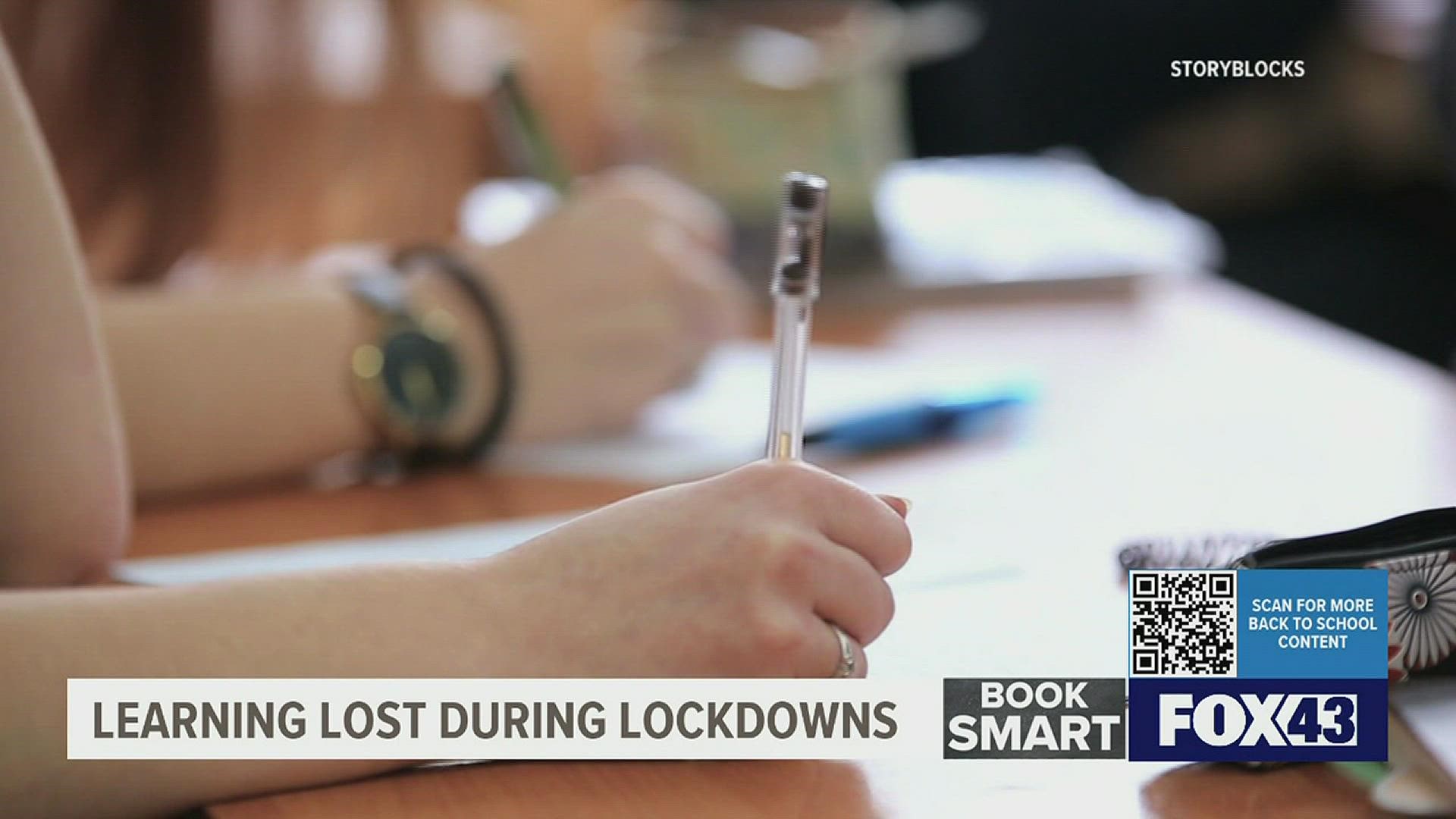PENNSYLVANIA, USA — Last school year was one of the most disrupted in recent memory, creating new challenges for both students and educators.
Although it ended with rising vaccination rates and even some in-person, outdoor graduation ceremonies, studies show that the overall impact on those in the classroom was significant. Many educators agree that the quality of education students received while learning remotely just wasn't on par with what they would have gotten through in-person lessons.
“The two greatest concerns are social and emotional wellness of students and mitigating any of those academic gaps that students may have," Dr. Sherri Smith, the Director of the Pennsylvania Bureau of School Support said.
Whether it was missing out on a chemistry experiment in a lab or getting the chance to ask a teacher that quick one-on-one question, students missed out on a lot of educational opportunities, according to Smith.
But can we quantify the effects of that unfinished learning?
Analysis by consulting firm McKinsey and Company shows that the impact of the pandemic on K through 12 students was significant. Research found that for the 2020-21 school year, students were testing 10 points below average in mathematics and nine points below average in reading when compared to students from previous years. Study authors estimate that this translates to about five months worth of learning for mathematics and four months of reading comprehension.
The study implies that unless steps are taken to address unfinished learning, today's students could earn an estimated $49,000 to $61,000 less over their lifetimes. This translates to the potential for a $188B impact on the United States economy every year as these students begin to enter the workforce.
What's being done to help students make up for that lost learning?
Dr. Smith says the Department of Education is providing schools with specific guidance on how to use resources that they already have to shrink learning gaps.
“Making sure that they provide after-school programs, summer programs, tutoring programs, and integrate into their classrooms additional lessons to support our students and hopefully overcome any of that lost learning this coming year," she said.
That $188B impact may seem like a huge number, but it's just a hypothetical; it’s the potential impact lost learning could have down the line. It's not to say that students necessarily slipped backwards and lost knowledge, the majority simply learned less than they otherwise would have. The reality of the here and now is that last school year, most students weren't given the opportunity to complete all the learning that they would have during a typical year.

